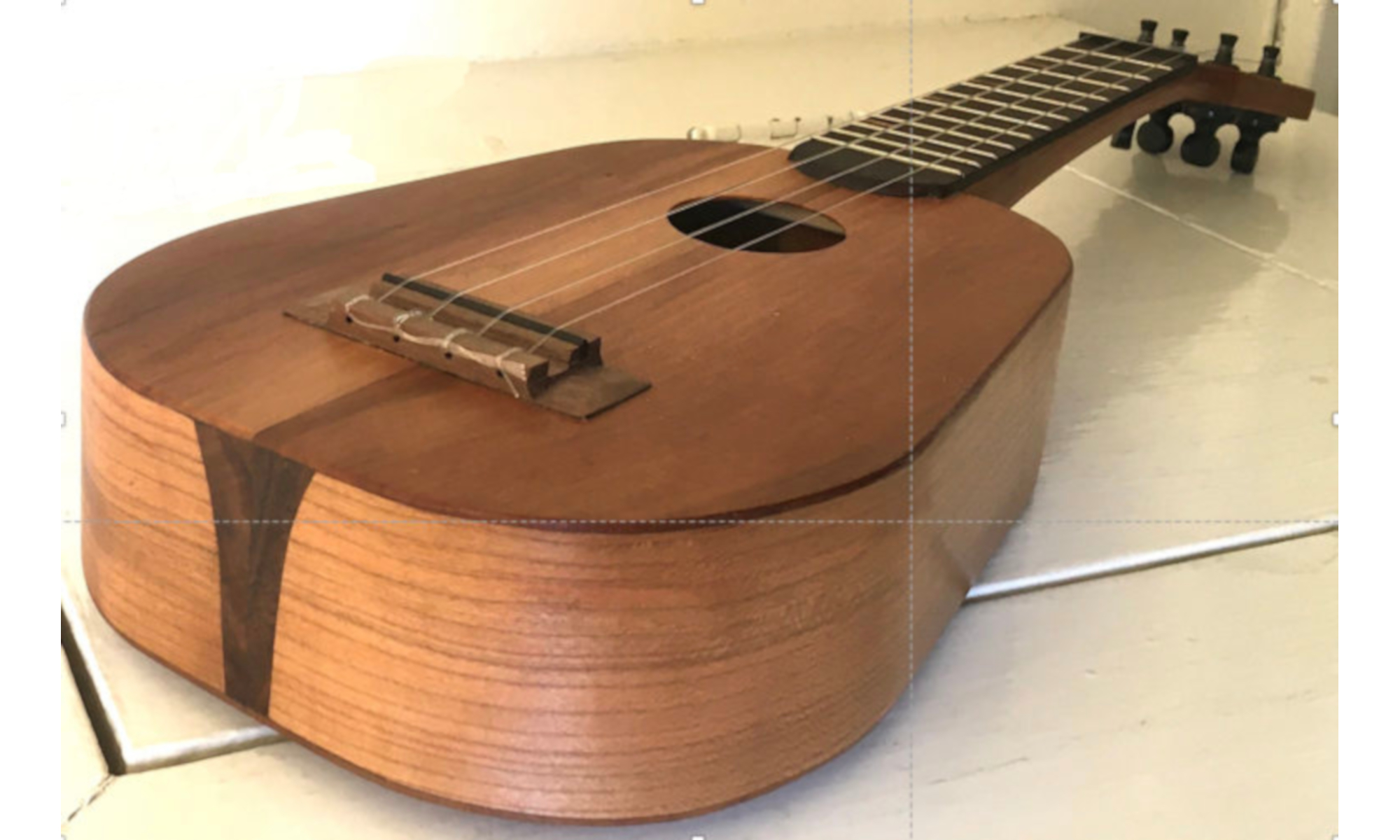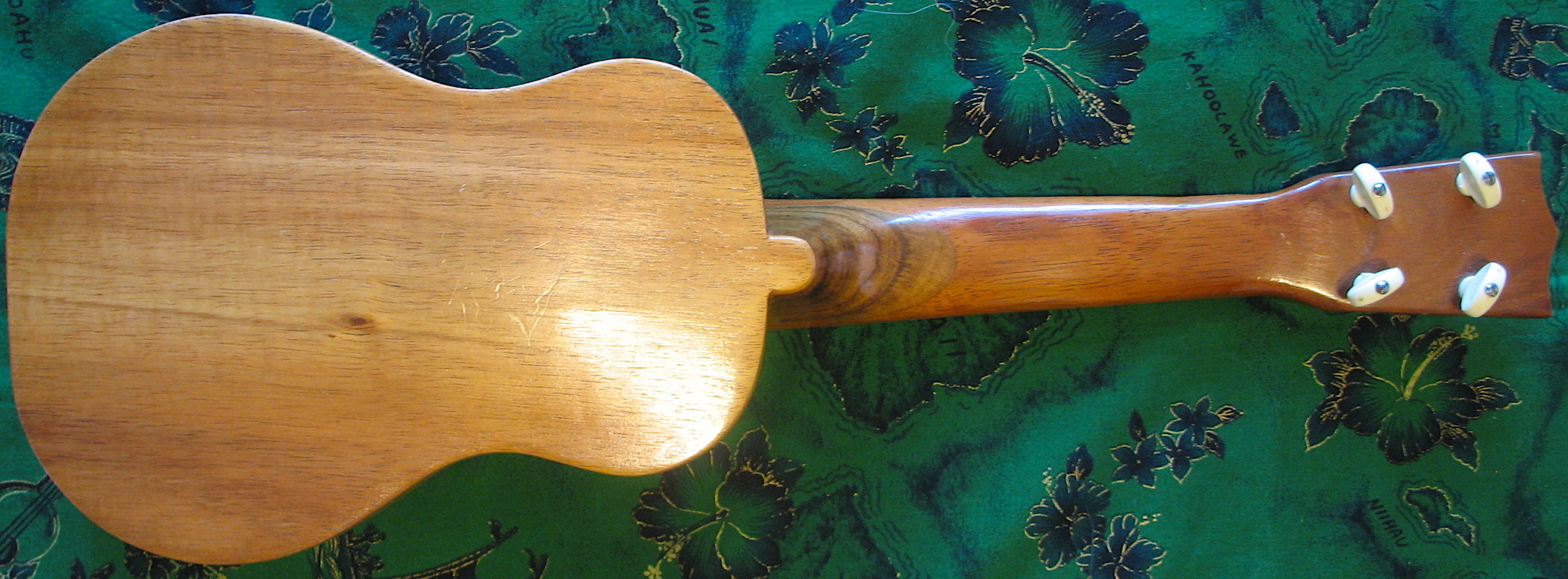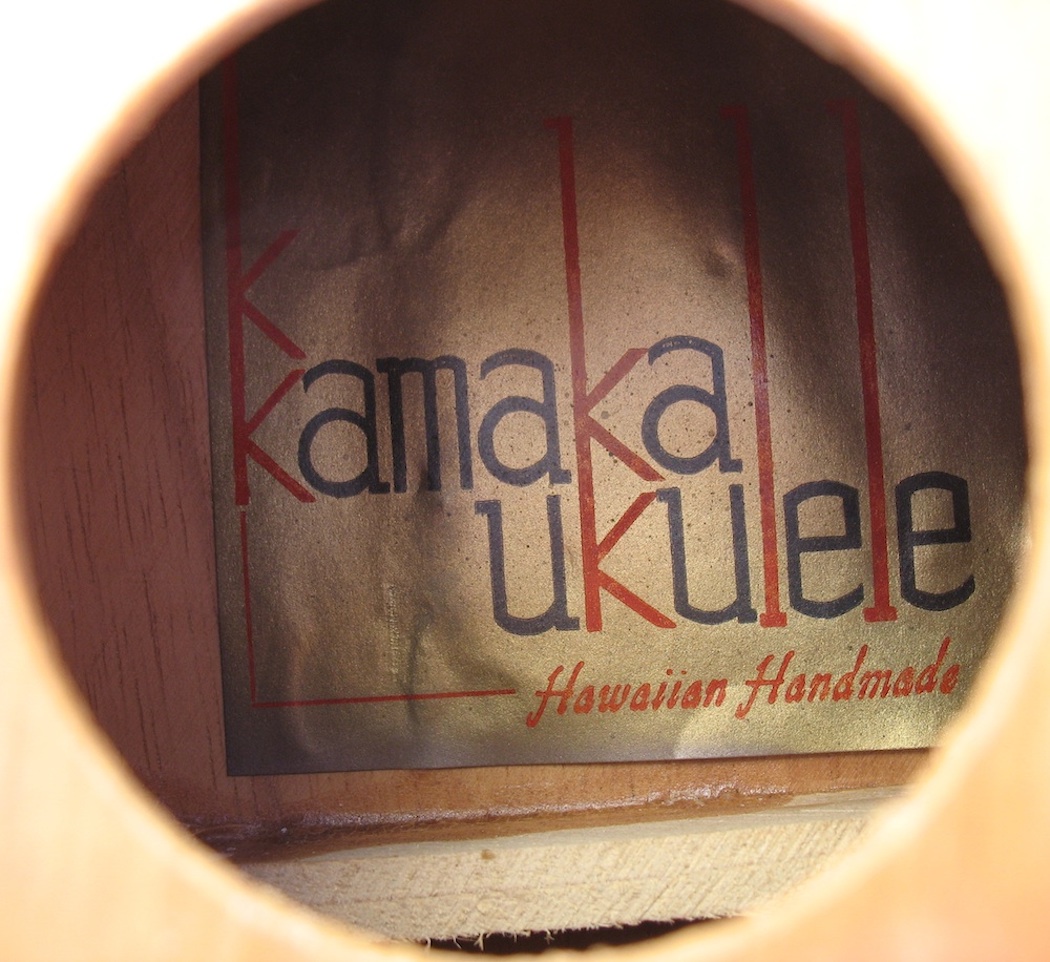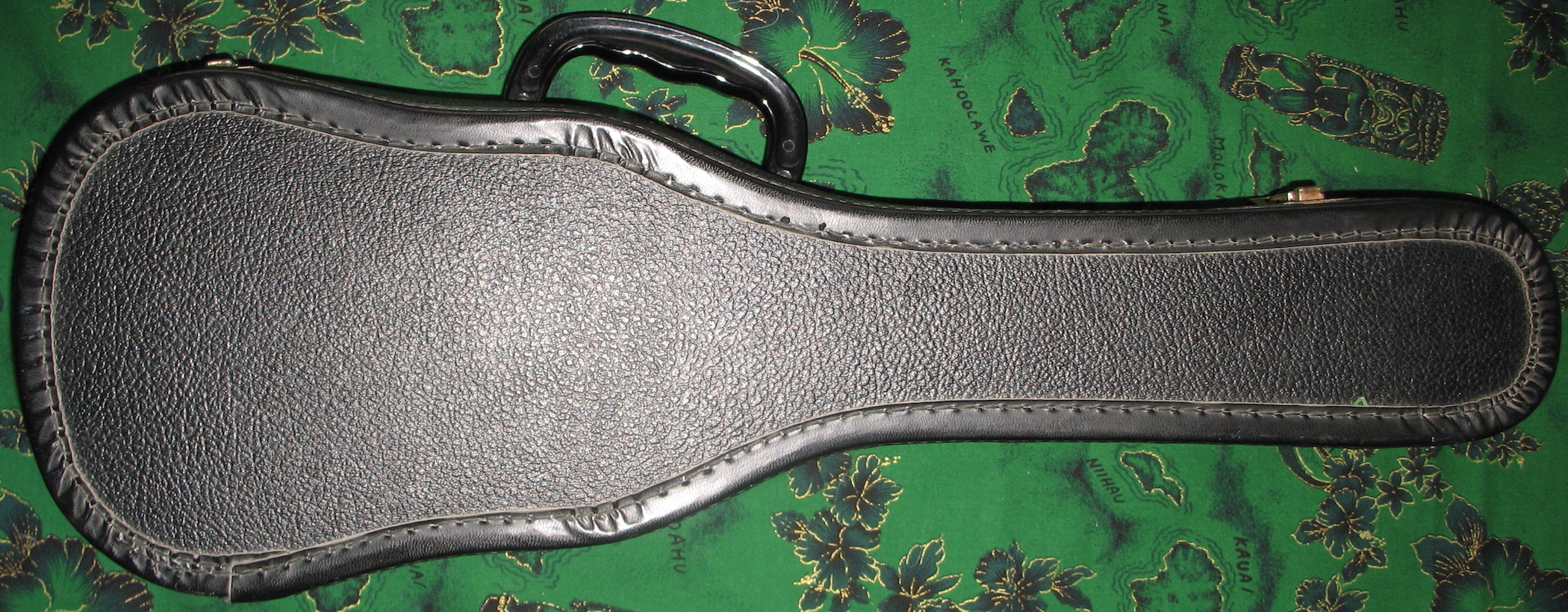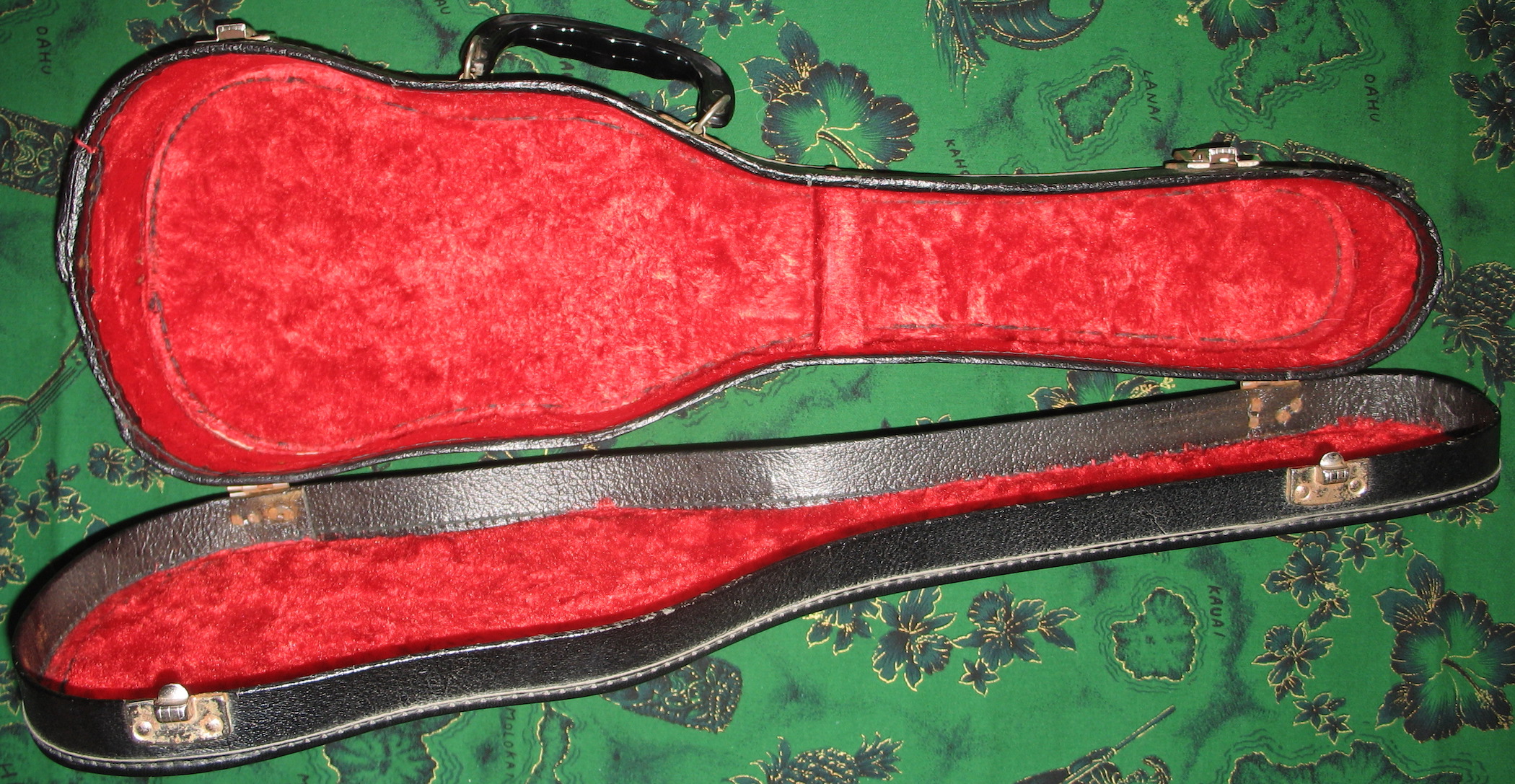Kamaka Gold Label soprano (or standard) ukulele, c. 1958. The date of 1958 is based on very faint pencil markings seen inside the sound hole on the block where the neck joins the body. Although very difficult to read, I believe I can make out “58”, possibly preceded by “19”, which I assume represents the year of manufacture. The body is constructed of solid koa, the traditional, native Hawaiian hardwood used for ukuleles. The body has a single-piece top and bottom and two-piece sides. The Kamaka family’s connection to ukulele-making goes back to 1916, when Sam Kamaka Sr., started the business. It is the oldest of current ukulele manufacturers. Note that these models did not have a separate saddle mounted on the bridge. It’s strung with Martin M600 fluorocarbon strings. I experimented with some other strings (Aquila Nylgut, Kamaka) but found that the Martins raised it to another level, giving it a bright, punchy sound that is regarded as typical of Hawaiian koa ukuleles. This ukulele is very light, weighing in at 10.5 oz. (298 grams), compared to the Martin (10 5/8 oz., 300 grams), Kala KA-S (12 5/8 oz., 357 grams), and Lanikai (14 oz., 397 grams). The latter has strap buttons, which obviously add to the weight.
Label for the Kamaka soprano ukulele. It’s obvious why the ukes are called Gold Label ukuleles. A later variant of this label says “HONOLULU, HAWAII” rather than “Hawaiian Handmade”. Although I have never seen this documented, the change may have corresponded with Hawaii gaining statehood on August 21, 1959.
Original hard, chipboard case with plush interior.
Sound sample for the Kamaka ukulele (.m4a format). Same mix as for the Lanikai: gCEA tuning, a portion of Pachelbel’s Canon in D (transposed to C), and a portion of the intro to Iz Kamakawiwo’ole’s version of Over the Rainbow.
